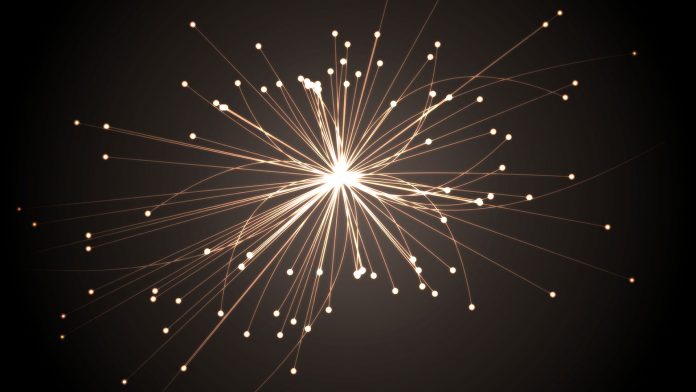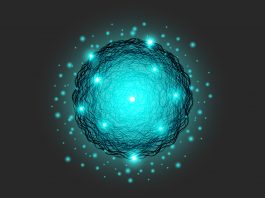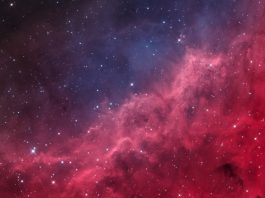Professor Roberto Petti from the University of South Carolina discusses current and future neutrino experiments (including a dedicated LBNF beamline at Fermilab) designed to explore fundamental interactions and the structure of nucleons and nuclei with neutrinos and antineutrinos.
Neutrinos are among the most abundant of known particles in the Universe; and are characterised by rather unique properties which make them an ideal probe of fundamental interactions and symmetries, as well as of the microscopic structure of matter. Interestingly, neutrinos are perhaps also the least understood particles. Significant uncertainties still exist on basic properties like their mass, their own nature (Dirac or Majorana), and their interaction probability with matter (cross-sections).
Recent observations of neutrino oscillations in various experiments provide evidence for mixing among different neutrino flavours and an indication of nonzero neutrino masses, this latter result also pointing towards new physics beyond the conventional Standard Model (SM). The discovery of asymmetries between neutrino and antineutrino oscillations in future experiments could provide an explanation for the difference between leptons and antileptons in the early Universe and, in turn, for the matter-antimatter asymmetry of the Universe.
Neutrinos experience only the weak and gravitational forces, typically resulting in a tiny probability of interaction with matter. This feature, while providing a cleaner probe compared to other known particles also experiencing electromagnetic or strong interactions, makes the detection of neutrinos extremely challenging and requires a large initial flux combined with massive detectors.
Additional desirable properties of the neutrino probe are the flavour selection of the Charged Current (CC) weak interactions and the natural spin polarisation. Since neutrinos of different energies are produced copiously by various astrophysical sources and can travel long distances without interacting, they also represent a valuable messenger for astronomical studies of the Universe, in combination with gravitational waves, cosmic rays, and electromagnetic radiation. With the advent of giant neutrino detectors and gravitational wave detectors like LIGO and VIRGO, we have witnessed the birth of multimessenger astronomy.
Long-baseline neutrino oscillation experiments
Although neutrino oscillations were initially observed using natural neutrinos originated from the nuclear reactions inside the Sun and from the interactions of cosmic rays with the atmosphere of the Earth, the use of man-made neutrino sources like nuclear reactors and focused neutrino beams has allowed systematic studies of this phenomenon under controlled conditions.
The smallness of the differences between the mass squares of the neutrinos, ∆m2, requires a long baseline (L) between the neutrino source and the detector, together with neutrino energies (E) tuned to achieve L/E ratios matching the expected oscillation maxima. Neutrino oscillations have been observed by a number of long-baseline experiments including the reactor-based KamLAND, Daya Bay, RENO and the accelerator-based MINOS, T2K, NOvA. The combination of all existing measurements results in relatively accurate values of the main parameters describing the neutrino mixing.
The primary goals of the next-generation long-baseline experiments like the Deep Underground Neutrino Experiment (DUNE) and Hyper-Kamiokande will be to search for asymmetries between neutrino and antineutrino oscillations and to determine the mass hierarchy among different neutrino types, in addition to precision measurements of the mixing parameters. In order to achieve the required physics sensitivity, these projects envisage massive detectors and newly designed high-intensity neutrino beams.
The DUNE experiment is based on two main components:
- A massive Far Detector (FD) located 1.5km underground in the Sanford Underground Research Facility in South Dakota (USA) at a baseline of 1,300km from the neutrino source; and
- A composite near detector (ND) system installed close to the neutrino source in the Fermi National Accelerator Laboratory (Fermilab).
The FD will be a modular time-projection chamber with a sensitive mass of 40 kilotonnes of liquid argon, a cryogenic liquid that must be kept at -185°C and which can provide image-like reconstruction capability of neutrino interactions.
Neutrinos are produced from the focusing and decay of secondary hadrons emerging from the collision of a primary proton beam with a high-power target. A new Long-Baseline Neutrino Facility (LBNF) beamline at Fermilab will deliver neutrino and antineutrino beams of unprecedented intensity to DUNE, with a nominal proton beam power of 1.2MW. A further planned upgrade of the accelerator complex could provide up to 2.4MW of beam power by 2030, potentially extending the DUNE science reach. The default neutrino energy spectrum is optimised for long-baseline oscillation measurements in the energy range 0.5-5GeV. In addition, a higher energy option (mostly in the 2-15GeV range) is possible for precision measurements and searches for new physics beyond SM.
High resolution near detector system
The ND system must accurately measure the initial un-oscillated energy spectra of all the neutrino flavours in the beam, to be compared with the corresponding ones measured in the FD to determine the energy-dependent effects introduced by neutrino oscillations. Since the energy of the incoming neutrino is unknown on an event-by-event basis and the measured event distributions are a convolution of the flux with the relevant cross-section in the target nucleus and the detector response, the ND system must be able to disentangle all these effects to reduce the corresponding systematic uncertainties affecting the long-baseline oscillation analysis.
Systematic uncertainties are particularly critical in the next-generation experiments like DUNE, given the relatively large statistics expected. The DUNE ND complex includes three separate components:
- A movable liquid argon time-projection chamber with pixellated readout (ND-LAr) similar to the FD;
- A movable multi-purpose spectrometer including a high-pressure argon gas (ND-GAr) time-projection chamber; and
- A multi-purpose system for on-Axis Neutrino Detection (SAND) permanently located on-axis.
The first two detectors can move off-axis relative to the beam to access different neutrino energy spectra (DUNE-PRISM). SAND is based on the superconducting magnet and the electromagnetic calorimeter repurposed from the KLOE experiment at the LNF laboratory in Italy.
Although primarily designed for the study of long-baseline neutrino oscillations, the LBNF beamline offers unique opportunities for neutrino scattering physics due to the very intense neutrino and antineutrino beams and the different energy spectra available. At the ND location (574m from the source) about 1.4 million CC interactions per tonne per year are expected with the default spectrum, raising to 6.6 million CC interactions per tonne per year with the high energy option and the upgraded beam.
Such high rates can address some of the limitations of past neutrino scattering experiments, in which the need of massive detectors typically implied some compromises on the resolution achievable in the detection of neutrino interactions. The intense flux of the LBNF beamline allows the use of a relatively compact on-axis detector, affording an accurate measurement of the momentum and energy of final state particles produced in neutrino interactions.
Control of neutrino targets
One of the options considered for SAND is to fill the inner magnetic volume (about 43m3) with a Straw Tube Tracker (STT) preceded by an active liquid argon target (LAr). The STT is designed to offer a control of the configuration, chemical composition, and mass of the neutrino targets similar to electron scattering experiments by physically separating the neutrino targets from the actual tracking system of negligible mass.
The base tracking technology is provided by low-mass straws similar to the ones used in many modern experiments for precision physics or the search for rare processes. Thin layers – typically 1-2% of radiation length – of various passive materials with high chemical purity are alternated with straw layers so that the target represents up to about 97% of the total detector mass. This feature, combined with the excellent vertex, angular, momentum, and timing resolutions are key factors to correctly associate neutrino interactions to each target material.
The targets can be easily unmounted or replaced even during data taking. The average density of the STT can be fine-tuned up to a maximal value of about 0.18g/cm3. A broad range of target materials like CH2, C, Ca, Fe, Pb, etc, can be installed, provided that they can be manufactured in the form of thin planes. Particle identification is available throughout the STT volume. The momentum scale of charged tracks can be calibrated to better than 0.2% in STT using the detected decays of Ks0 particles.
‘Solid’ hydrogen concept
The accurate control of the neutrino targets in STT allows the implementation of a ‘solid’ hydrogen (H) target by subtracting measurements on dedicated graphite (pure carbon) targets from those on polypropylene (CH2) targets. The high resolution of STT allows the identification of the interactions on hydrogen within the CH2 targets before subtraction by using a kinematic analysis based on energy-momentum conservation.
Since the H target is at rest, the CC events are expected to be perfectly balanced in a plane transverse to the beam direction. Instead, events from nuclear targets are affected by nuclear effects, resulting in a significant missing transverse momentum and a smearing of the transverse plane kinematics. By exploiting these differences, STT can achieve purities of the selected H samples in the range 80-95%, depending upon the specific process considered. The subtraction of the small residual background is entirely data-driven by using the corresponding measurements from the graphite targets, which automatically include all types of interactions, as well as detector effects, relevant for the H selection. This technique can be applied to all exclusive and inclusive topologies in both neutrino and antineutrino CC interactions on H.
The ‘solid’ hydrogen concept enabled by the STT is critical in reducing the systematic uncertainties on various ND measurements and provides a powerful tool to address the main limitations of past neutrino scattering experiments. With the default LBNF beam we expect to select about 579,000 neutrino epsilon CC on H and about 333,000 antineutrino epsilon CC on H per year with the default beam spectrum. For comparison, the only available measurements on H are based on a total of about 16,000 events collected by bubble chambers almost 40 years ago. Since then, safety requirements related to the underground operation and practical considerations prevented new measurements. The ‘solid’ hydrogen in STT can be a viable alternative to detectors based on problematic liquid or gaseous H2.
Control of nuclear effects
Nuclear targets are required in neutrino experiments to collect sizeable statistics, but they also introduce additional systematic uncertainties with respect to an elementary target like hydrogen. The unknown neutrino energy must be inferred from the detected final state particles originated in the interactions, which are affected by a substantial nuclear smearing. The latter is present even for an ideal (perfect) detector since the initial momentum of the bound nucleon is not known and hadrons produced in the primary interactions can be absorbed or re-interact within the nucleus. Determining the energy of the incoming neutrino therefore typically implies model corrections depending upon a number of parameters, often empirically tuned with the observed kinematic distributions. These corrections can be critical for poorly understood processes.
The ‘solid’ hydrogen target in STT provides high statistics control samples free from nuclear effects. Furthermore, the STT is designed to integrate a variety of thin nuclear targets such as CH2, C, etc, subject to the same detector effects. A direct comparison of CC interactions on H with the corresponding ones obtained from the nuclear targets within STT – including the LAr target – allows a direct quantification of nuclear effects in different nuclei, constraining the corresponding nuclear smearing on the observed kinematic distributions. As a result, we can precisely calibrate the reconstructed neutrino energy scale and reduce the uncertainties of data collected from nuclear targets.
Control of neutrino flux
In conventional wide-band neutrino beams like the LBNF, the energy of the incoming neutrino is unknown on an event-by-event basis and typically can vary over a rather broad range. For this reason, neutrino experiments have been affected by relatively large (5% to 10%) systematic uncertainties on the knowledge of the neutrino flux. The role of this quantity in neutrino experiments cannot be overemphasised since it affects virtually all measurements performed by the detector.
Precision flux measurements can be performed in STT using exclusive neutrino epsilon single-pion and antineutrino epsilon quasi-elastic processes on hydrogen with small energy transfer to the target. The use of the hydrogen target solves the problems arising from the nuclear smearing, while the small energy transfer reduces the systematic uncertainties on the energy dependence of the cross-sections. All relevant systematic uncertainties affecting the flux measurements can be directly constrained in STT using data control samples. This technique allows the determination of the shape of the neutrino and antineutrino fluxes as a function of energy with an accuracy better than 1% in conventional wide-band neutrino beams.
This level of precision cannot be achieved with other known techniques using nuclear targets. The measurement of the antineutrino epsilon quasi-elastic interactions on H at small momentum transfer Q can also provide the absolute flux normalisation, since the corresponding cross-section at Q~0 is a constant known to high accuracy. The absolute neutrino flux normalisation can be determined with a precision better than 2% in STT from the neutrino elastic scattering off electrons, by exploiting the excellent electron identification and angular resolution of STT.
Precision measurements and searches for new physics
The STT instrumentation of SAND offers a possible way to address the main limitations of neutrino scattering experiments – statistics and resolution, control of targets, nuclear effects, and fluxes –reducing the longstanding precision gap with respect to electron scattering experiments. These improvements would make it possible to exploit the unique properties of the neutrino probe for precision studies of fundamental interactions and of the structure of nucleons and nuclei. The near site of the LBNF could then become a general purpose neutrino physics facility with a broad programme of physics measurements complementary to the ongoing efforts in the fixed-target (12GeV programme at the Thomas Jefferson laboratory), collider (Electron-Ion Collider), and nuclear physics communities. The level of precision achievable can provide insights on various fields, unveiling the potential for discoveries and generating hundreds of diverse physics studies. This physics programme has no additional requirements with respect to the ones needed to constrain the systematic uncertainties affecting the long-baseline neutrino oscillation measurements in DUNE.
Precision tests of electroweak physics can be performed using various complementary physics processes in neutrino and antineutrino interactions. The unique combination of hydrogen and nuclear targets within STT allows precision studies of the structure of nucleons and nuclei exploiting the flavour selection of the weak current: structure functions and parton distributions, QCD studies, sum rules, higher twists and non-perturbative effects, strangeness content of the nucleon, charm production, isospin physics, tests of charge symmetry, structure of the weak current, etc.
This diverse programme of precision measurements would concurrently address existing discrepancies and be sensitive to new physics beyond the Standard Model, in a way complementary to direct searches. These latter can also be performed over a broad range of topics like sterile neutrinos, non-standard interactions, dark sector physics, etc.
In summary, the intense LBNF beams offer unique opportunities for neutrino physics. A relatively modest investment – the cost of adding the STT to the existing SAND detectors repurposed from the KLOE experiment – can enable a broad physics programme relevant for various fields and synergistic with other projects ongoing or planned within different physics communities. The resulting measurements can also directly benefit the long-baseline oscillation analyses in DUNE. Exciting times are expected for neutrino physics in the near future.
References
B. Abi et al., ‘Deep Underground Neutrino Experiment (DUNE)’, Far Detector Technical Design Report, Volume I, arXiv:2002.02967 [physics.ins-det], https://arxiv.org/abs/2002.02967
G. Adamov et al., ‘A proposal to Enhance the DUNE ND Complex’, DUNE DocDb 13262; P.Bernardini et al., European Particle Physics Strategy Update 2018-2020, contribution 131, https://indico.cern.ch/event/765096/contributions/3295805
G. Adamov et al., ‘Precision Measurements with (Anti)neutrinos at LBNF’, LoI submitted to Snowmass 2021, contribution 122 to neutrino physics frontier, https://snowmass21.org/neutrino/start
R. Petti, ‘Precision Measurements of Fundamental Interactions with (Anti)neutrinos’, PoS DIS2019 (2019) 235, arXiv:1910.05995 [hep-ex], https://arxiv.org/abs/1910.05995
H. Duyang, B. Guo, S. R. Mishra, and R. Petti, ‘A Novel Approach to Neutrino-Hydrogen Measurements’, arXiv:1809.08752 [hep-ph], https://arxiv.org/abs/1809.08752
H. Duyang, B. Guo, S. R. Mishra and R. Petti, Phys. Lett. B 795, (2019) 424, arXiv:1902.09480 [hep-ph], https://doi.org/10.1016/j.physletb.2019.06.003
Professor Roberto Petti
Physics and Astronomy
University of South Carolina
+1 803 777 6830
petti@sc.edu
https://sc.edu/study/colleges_schools/artsandsciences/physics_and_astronomy
Please note, this article will also appear in the third edition of our new quarterly publication.









